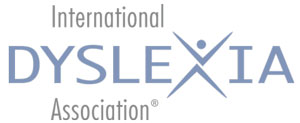
[HEADING GOES HERE]
Students who have oral and/or written language learning difficulties in their mother tongue may have problems learning another language in school. This does not mean that they should avoid the study of a new language. With appropriate instruction most students can experience success. The keys to success are the responsibility of both teachers and students. Teachers need to provide appropriate, adapted instruction that meets a particular student ’s needs. Students need to
recognize their learning strengths and weaknesses and stay committed to the task.  
Are students who struggle to learn a foreign language usually classified as learning disabled?
No. Many students have difficulties learning a new language system. This does not mean that they have dyslexia or a learning disability .  Just as there are some students who have particular strengths in math, science, or any other discipline, some students have particular strengths in learning languages. There is great variability in
people’s success in studying a foreign language in
school settings. Because some students classified as having dyslexia or learning disabilities (LD) and those not classified as having dyslexia or LD generally display similar difficulties and struggles with foreign language, these students are sometimes referred to as  at-risk .
What is the nature of the foreign language learning difficulties of at- risk learners?
Students who have significant difficulties in one or more of the four language systems in their mother tongue (i.e., reading, writing, listening, and speaking) may experience problems with foreign language learning in school. The extent of this difficulty in the foreign language classroom is
likely to depend on the nature and severity of their oral and written native language problems .
Students who have difficulties in most or all of the four language systems are likely to experience the most problems learning a foreign language, particularly in traditional language classrooms. Language problems can range on a continuum from no difficulties to mild to moderate to severe difficulties. Research findings suggest that there is not a specific disability for learning a foreign language. Rather, the difficulties are an extension of a continuum from very good to very poor language learners.
Why might a regular foreign language class be difficult to pass for at-risk learners?
In general, foreign language teachers are not trained to identify specific learning needs, nor are they trained to provide specific accommodations. Their training may have stressed whole-language- like strategies for in-class learning and testing of the four language areas in the foreign language. Oral communication, language laboratory practice with listening tapes, and computer-assisted learning are currently traditional components of foreign language learning classes. These methods of instruction may serve the ideal learner without language processing problems, but they are often detrimental to the at-risk learner, who may need a more systematic, structured, multisensory approach.
What kinds of problems characterize the foreign language learner with mild to moderate language difficulties?
Some students exhibit mild to moderate language difficulties, such as the following:
At-Risk Students and Foreign Language Study  –  Page 2
study than other school subjects
especially when it is spoken quickly  
given in the foreign language
What additional kinds of problems characterize the foreign language learner with severe language difficulties?
Students who exhibit severe language difficulties also may have problems with the following:
sentences that are provided by the teacher or through an audiotape or computer  
syllable, such as words with prefixes and suffixes, or compound words
across words  
when it is spoken slowly
What might the foreign language teacher do to assist students with mild to moderate foreign language learning difficulties?
A systematic multisensory structured language (MSL) approach that benefits students who struggle to learn to read and spell in their native language also benefits students who have difficulties learning a foreign language. The following recommendations are based on the key principles of the multisensory approach:
( repetitive principle ).
make the connection between the known and the new information explicit ( cumulative principle ).
phonemes or speech sounds of the foreign language.
letters in the foreign language and the letter(s) the sounds represent ( alphabetic/phonetic principle ).
language concept to be learned and ask them to explain the concept in their own words; examples include rules for applying word endings, appropriate word order, and subject/verb agreement ( metacognitive principle )
words while reading, especially words with more than one syllable ( analysis principle ).
At-Risk Students and Foreign Language Study  –  Page 3
What additional adaptations might the teacher make that will benefit the student with severe language learning difficulties?
Additional ways to enhance foreign language learning success include the following:
movements to produce clear pronunciations. After pronouncing the sound, have students simultaneously trace, say, and repeat the sound pattern. Repeated, explicit modeling is key, as is clarifying for students the difference between the native and the foreign language pronunciation of the same letter pattern.
be learned. Break the concept into small working steps that are often considerably more detailed than a typical textbook presentation of the steps. Model for students how to think through the concept step by step. It sometimes helps to present a memorization/recall device, such as a song, mnemonic device, or color-coding (which works well with rules for word endings).
guides, summary sheets, and graphic representations) of the material covered.  
practice and reinforce a concept, pairing a strong student with a weaker student.
as songs with specified grammatical sentence structures, special rhythms, and words in the native language that sound like the word in the foreign language.
strategies.
grammatical charts in foreign language textbooks.
accommodate students with slow language processing skills.
Do students with foreign language learning difficulties have to study a foreign language in school?
The study of a foreign language is becoming increasingly important in our global economy and multilingual society. Many at-risk students can benefit from the study of a foreign language in the appropriate learning environment.
Unfortunately, such an environment may not be available. In some high schools, colleges, and universities in the United States, another option is to substitute courses on culture for the foreign language requirement. In most cases, to receive accommodations the student must be classified as having a learning disability. Some schools may accept a history of failure in foreign language courses. Schools that offer options generally
include a statement in the school’s governance
document; alternatively, the student might talk to the school’s learning assistance specialis t.  
At-Risk Students and Foreign Language Study  –  Page 4
“promoting literacy through research, education and advocacy”™
The International Dyslexia Association · 40 York Road · Fourth Floor · Baltimore · MD · 21204 Tel:  410-296-0232  · Fax: 410-321-5069 · E-mail: info@interdys.org  · Website:  http://www.interdys.org
©  Copyright 2012, The International Dyslexia Association (IDA).   IDA encourages the reproduction and distribution of this fact sheet. If portions of the text are cited, appropriate reference must be made. Fact sheets may not be reprinted for the purpose of resale.
Suggested Readings/Resources
Birsh, J. R., & Shaywitz, S. (Eds.). (2011).
Multisensory teaching of basic language skills  (3rd ed.). Baltimore, MD: Brookes. Downey, D., & Snyder, L. (2000). College students with dyslexia: Persistent linguistic deficits and foreign language learning.  Dyslexia, 6,  101 – 11
1. Ganschow, L., Philips, L., & Schneider, E. (2001). Closing the gap: Accommodating students with language disabilities in college.  Topics in Language Disorders, 21 , 17 – 37. Ganschow, L., & Sparks, R. (2001). Learning difficulties and foreign language learning: A review of research and instruction.  Language Teaching , 34 , 79 – 98. Schneider, E., & Crombie, M. (2003). Dyslexia and foreign language learning . United Kingdom: Fulton Publishers.
Schneider, E., Ganschow, L., Sparks, R., & Miller, K. (2007). Identifying and teaching learners with special needs. In R. McCarthy (Ed.),  Best practices tool kit ¡Avanza! Avençemos!  (pp. A35 –
A42). Boston: McDougal Littell- Houghton Mifflin Division. Schwarz, R. L. (1997).  Learning disabilities and foreign language learning.  Available from http://www.ldonline.org/article/6065 
Scott, S. S., & Manglitz, E. (1997).  Foreign language learning and learning disabilities.  Available from http://www.ldonline.org/article/6066
The International Dyslexia Association (IDA) thanks  Leonore Ganschow, Ed.D., and Elke Sc hneider, Ph.D.,  for  their   assistance in the preparation of this fact sheet.

